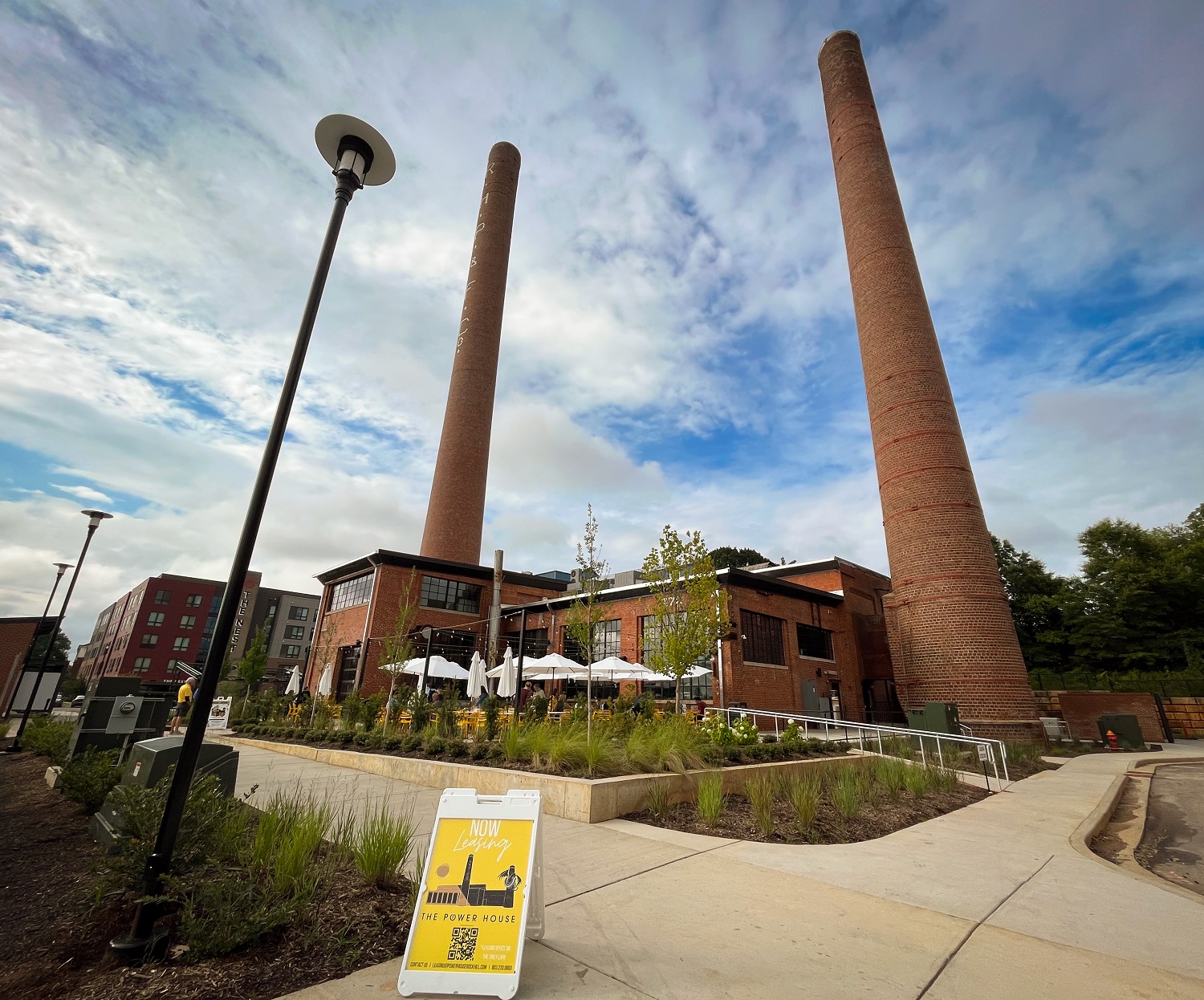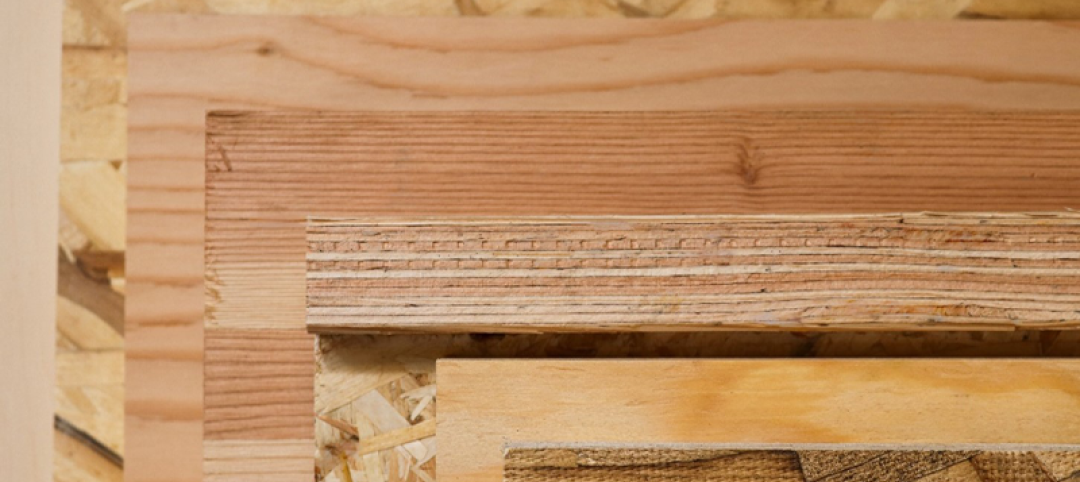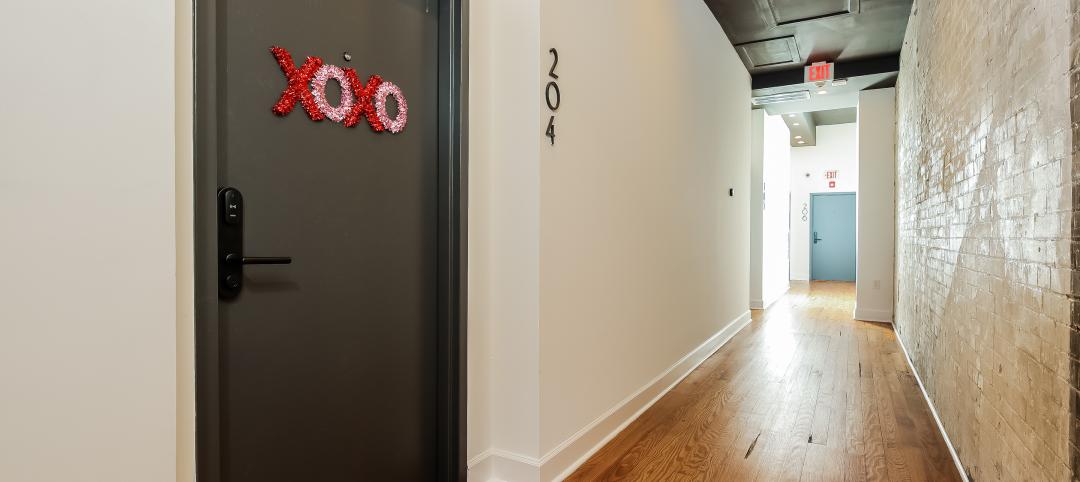To many people, the idea of re-developing the old Bleachery Mill Power House in Rock Hill, S.C., was the stuff of nightmares. But to Tara Sherbert of the Sherbert Group, it represented an opportunity to place the crowning jewel on the city’s University Center development project.
“The Power House was one of the last buildings considered in the University Center project, because it was by far the most complex,” Sherbert said. A relic of a bygone era, the building stood abandoned for decades. With six massive boilers inside and eight feet of contaminated water in the basement, renovating the building would be no small task.
“There aren’t too many people crazy enough to take on a project like this,” said Sherbert. “But we specialize in historic renovations. It’s what we do.”
Renovating the Power House would be an audacious undertaking, but the Sherbert Group wasn’t afraid of it. With help from partners like Framework Architecture and Stenzel Development – and the use of an innovative new product from Six3Tile – they have been able to resurrect a hundred-year-old building and transform it into a place people will enjoy for the next hundred years.
It all started with a new vision for the building.
A Gem in Rough Shape
Sherbert and her team envisioned the Power House as the main hub of the new University Center project in Rock Hill. Looking beyond the 60,000-square-foot structure’s many challenges, they saw a place where the community could come together to enjoy food, have a few beers, and enjoy live music.
The design included space for 37 apartments, a food court and a brewery, as well as outdoor spaces for dining and gathering. “It has a 20,000-square-foot event lawn and a dynamic stage for music and other entertainment,” said Sherbert. “It was designed for the community to enjoy year round. It’s kind of a gem.”
But polishing that gem and making it beautiful would not be easy. Not only was the building neglected for decades, it was also listed with the National Park Service. To maintain that designation, the building’s footprint, façade and architectural integrity had to remain largely intact.
And that’s just where the challenges began, as the Power House was not originally constructed to house residential and commercial spaces. “When you’re working within a historic building, you’re dealing with unusual, funky shapes and spaces,” Sherbert mused. “The structure is long and wide, but then arches up into smaller sections to accommodate the boilers and the coal troughs.”
Even the process of designing and envisioning the interior was difficult. The team of architects and engineers, led by Michael Spangenberg of Framework Architecture, had to analyze all of the existing structural steel and determine what could be removed and what had to remain. But that was impossible with the old boilers still in place.
“The boilers took up the entire interior of the building, so we couldn’t even see the historic structural steel when we started, let alone determine what needed to be kept, removed, or reinforced,” recalled Sherbert. “We had to design the building’s interior as we progressed through the project.”
Once the building was empty and the interior spaces were planned, creating the apartment units and other spaces had another layer of difficulty. Unlike in new construction, when apartment units are all nearly identical, there were no standard units in the Power House.
“We had to work around the structural steel and within the existing walls and windows,” said Sherbert. “It made for some pretty unique design and construction challenges.”
But above all, the team wanted the spaces inside the building to be distinctive and reflect the spirit of the building. The apartment units needed to be elegant and luxurious. The brewery and food court needed to represent the operators’ brands, while also providing a unique atmosphere for guests.
To accomplish these goals, Sherbert enlisted help from and old partner in Stenzel Development, and a new one in Six3Tile.
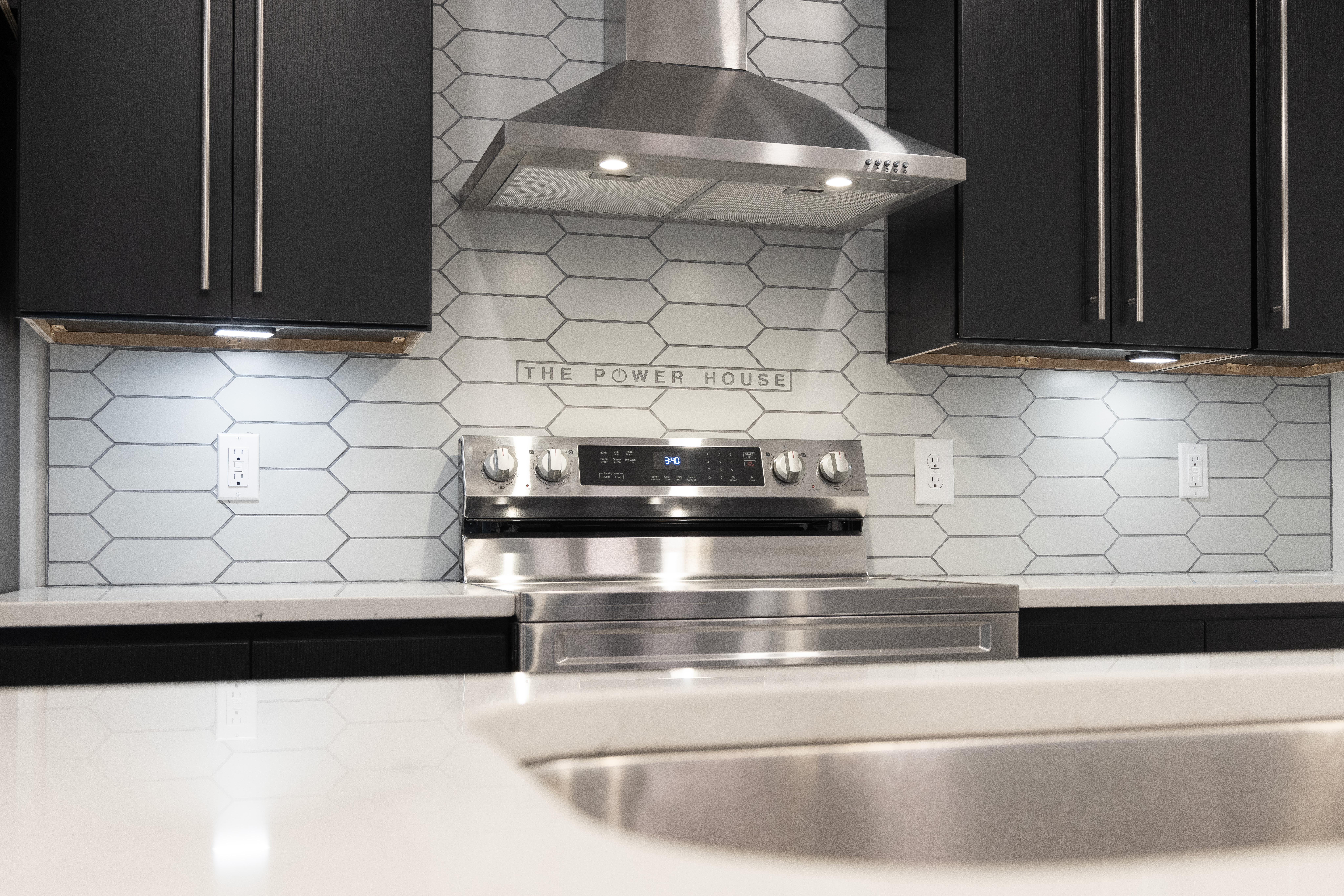
Upscale Food & Drink
Two aspects of the Power House project that would draw the most people – and therefore be the most visible – are the food court and the brewery. Stenzel Development, a contractor that specializes in restaurants and foodservice construction, led the build-out of these two areas.
“They’re going to bring in a lot of people,” said Tom Stenzel of Stenzel Development. “Everyone loves to gather at a brewery, and the food court is going to offer some great food options.”
With seven stalls, the food court will have everything hungry foodies will desire, from burgers to coffee to ice cream to soul food. Even a barber shop will be located adjacent to the food court. The brewery space will be occupied by Middle James Brewing, which is already a North Carolina favorite. The Power House will be their second location.
The foodservice area of the Power House provided a unique challenge to Stenzel and his team.
They had to accommodate the different brands of the operators, but they also had to create a space that had a unifying, cohesive look while reflecting the larger design of the Power House itself.
One of the ways Stenzel and his team accomplished that was with the tile in the food court stalls and in the brewery. But they didn’t use standard tile. They instead used a new product from Six3Tile that helped them accomplish their goals of unifying the feel of the food hall while also simplifying design and installation.
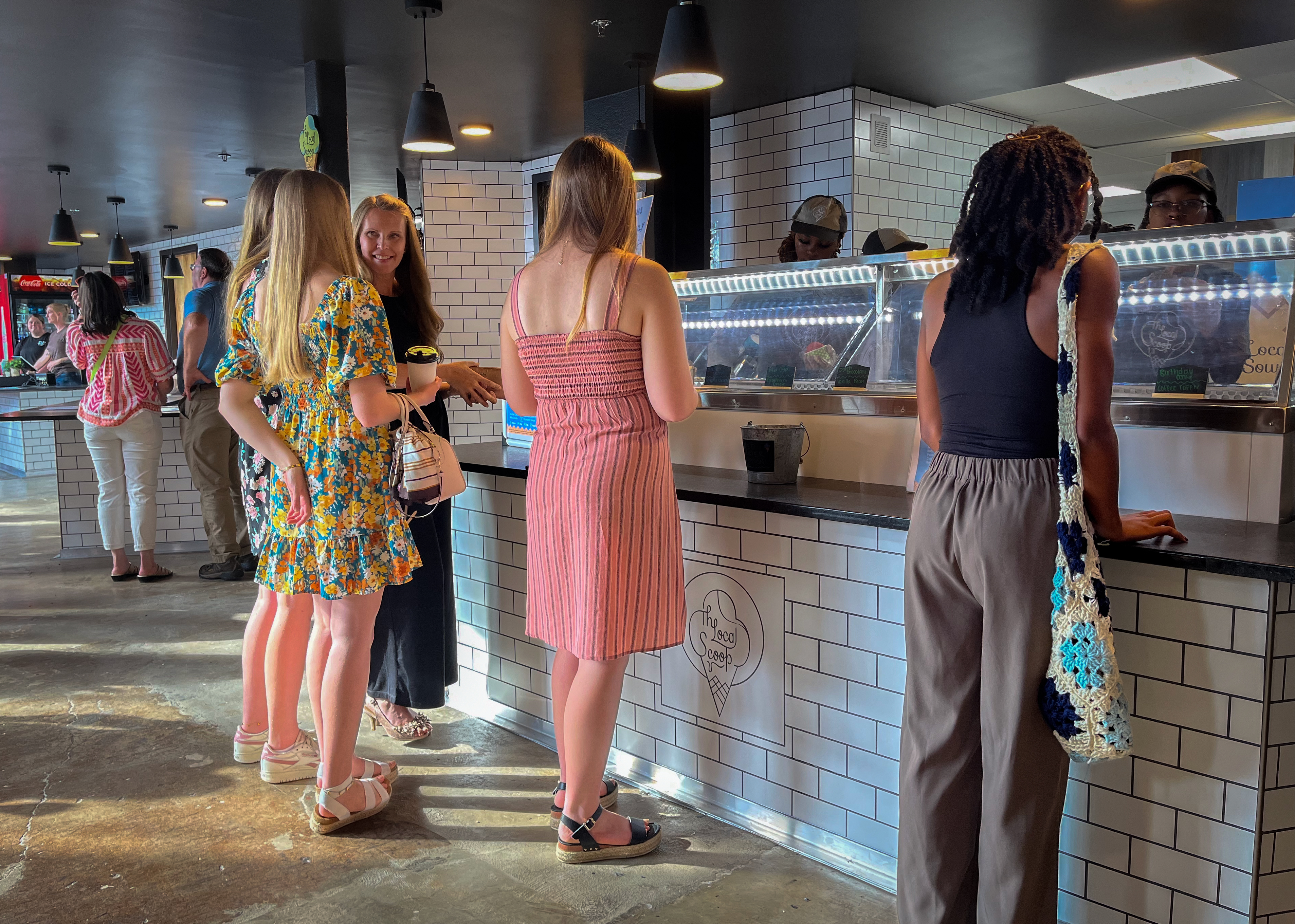
Custom Look, Fast & Easy Installation
Six3Tile’s Pro Kits are a tile panel solution that takes the complexity out of tile installation; providing a premium, luxurious feel in a fraction of the time. According to company Founder & CEO Cal Trumbo, the product represents a major leap forward for developers and contractors who use tile in their installations, because it drastically reduces installation time and labor costs, while still providing the upscale look designers want.
“Installing ceramic tile has inherent complexities and requires a certain skill set,” said Trumbo. “Our product offers that same finished look of traditional tile in a large panel format, dramatically reducing the time it takes to install.”
“It’s very simple,” Stenzel agreed. “It’s easy to cut to fit whatever corners and angles you need, and it’s lightweight and easy to work with, so we can install a lot of square footage in a short period of time.”
In addition, Six3Tile partnered with Stenzel to provide their custom design offering of inlaid designs and logos, which was important for the brewery and food court. “The logo designs in the Six3Tile panels was huge for the operators,” he continued. “They had the look of a custom tile installation in a product that took minutes to install.”
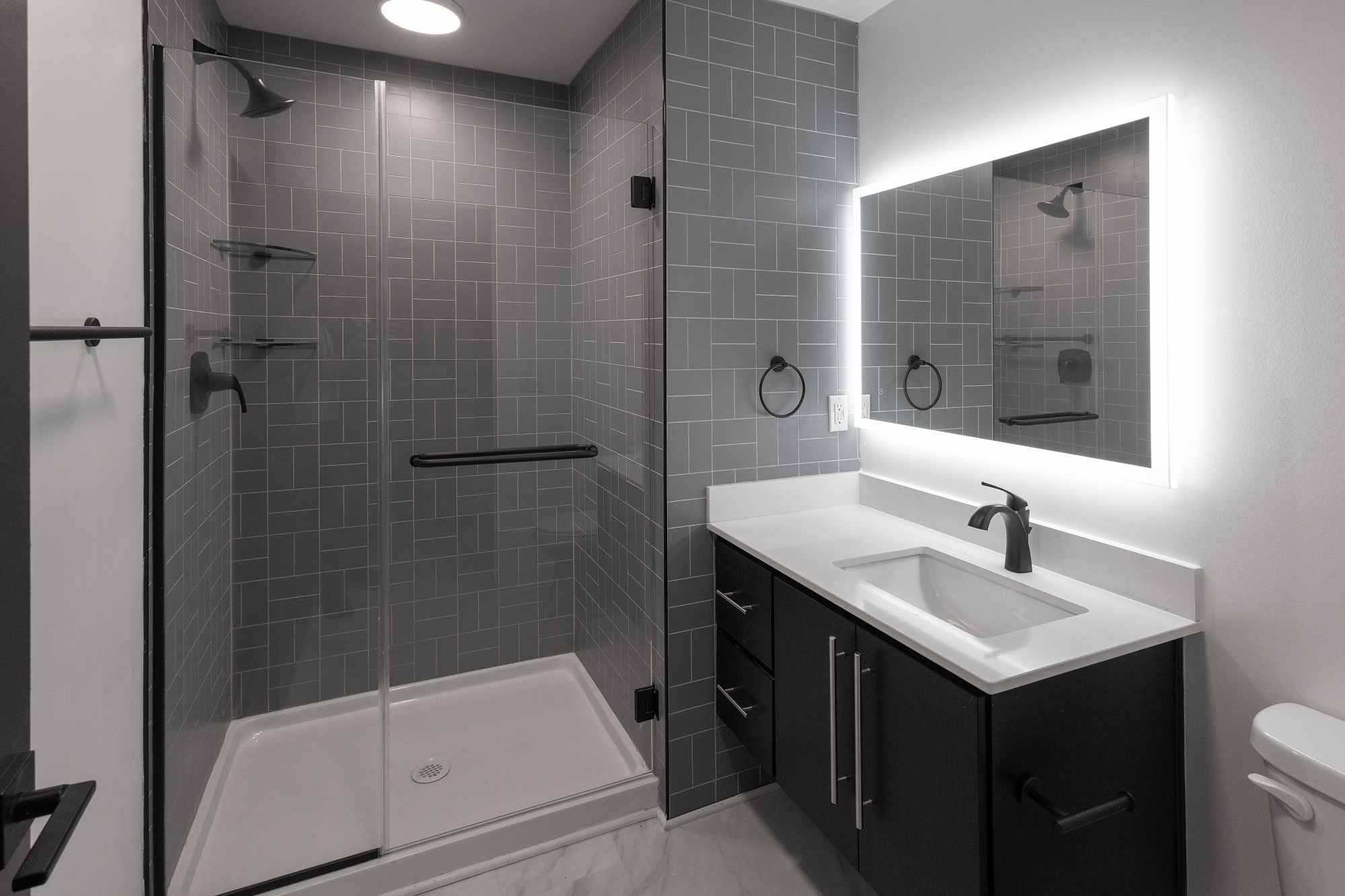
Unique and Different Apartments
Aside from the food court and brewery, the Power House was also designed to house luxury apartments. Being in a distinctive, historic building, the residential units needed to have a refined, upscale feel that matched the rest of the building.
That meant using finishing touches that made each unit feel custom and stylish. “We didn’t want typical finishes, that would go into a garden style apartment,” said Sherbert. “We wanted everything to kind of stand out and be unique and different.”
Because of the nature of the building, the apartments are a far cry from standard units in a newly constructed building. They are built to accommodate the dimension of the structure, giving them unusual floorplans and shapes.
While this made for interesting dwelling units, it made life difficult for the designers and contractors who created the apartments. Every apartment had to be designed and finished as its own distinct unit. It was not possible to place large orders of products in standard sizes, because there were no standard sizes.
Once again, Six3Tile Pro Kits made finishing the apartments easier. “Field measuring had to be fairly extensive, and we couldn’t rely on drawings to order products,” added Sherbert. “The Six3Tile panels gave us a lot of room for error, because they could easily be fitted to accommodate each space.”
Sherbert added that Six3Tile helped her designers create beautiful homes for the future residents at the Power House. “Collaborating with the Six3Tile team, we could create unique designs, color-match the grout to the walls, and create backsplashes and bathrooms that appeal to the residents’ sense of style and individuality,” she said.
That kind of design flexibility is what Six3Tile was designed for, according to Trumbo. “In our custom design line, you can choose different patterns and colors and adapt them to almost any application,” he said. Six3Tile offers standard patterns and colors as well.
And because the panels are so easy to install, they can eliminate cost-related design restrictions. “In a project like the Power House, which had so many challenges due to the nature of the building, budget constraints were a real concern,” Trumbo continued. “The Six3Tile gave Tara and her teams more design flexibility at no additional cost.”
Heart of the Community
When Sherbert and her teams first entertained the idea of renovating the Power House, she faced a great deal of skepticism. “People told us we were out of our minds,” she recalled.
But by staying true to their vision, and working collaboratively, Sherbert, Spangenberg, Stenzel, and the rest of their partners created a special venue the residents of Rock Hill will enjoy for generations. When it opens later in 2023, the Power House will be anything but a standard mixed-use building. Sherbert said she is looking forward to seeing it when it’s fully occupied, and people start enjoying all that it has to offer.
“We expect constant programming,” she said. “Music every night, weddings, corporate events, festivals. We expect it to be the heart of the community for many years to come.”
Contact Information:
www.SIX3TILE.com
info@alerismfg.com
843-410-9754

Related Stories
Cladding and Facade Systems | Sep 22, 2023
5 building façade products for your next multifamily project
A building's façade acts as a first impression of the contents within. For the multifamily sector, they have the potential to draw in tenants on aesthetics alone.
Sponsored | Multifamily Housing | Sep 21, 2023
5 Helpful Resources for Designing & Building with Engineered Wood
From in-depth, technical publications with detailed illustrations and examples to in-person consultations with engineered wood specialists, APA offers a host of helpful resources for commercial designers and installers working with engineered wood.
MFPRO+ Blog | Sep 21, 2023
The benefits of strategic multifamily housing repositioning
With the rapid increase in new multifamily housing developments, owners of existing assets face increasing competition. As their assets age and the number of new developments increases seemingly day-by-day, developers will inevitably have to find a way to stay relevant.
Mixed-Use | Sep 20, 2023
Tampa Bay Rays, Hines finalize deal for a stadium-anchored multiuse district in St. Petersburg, Fla.
The Tampa Bay Rays Major League Baseball team announced that it has reached an agreement with St. Petersburg and Pinellas County on a $6.5 billion, 86-acre mixed-use development that will include a new 30,000-seat ballpark and an array of office, housing, hotel, retail, and restaurant space totaling 8 million sf.
Engineers | Sep 15, 2023
NIST investigation of Champlain Towers South collapse indicates no sinkhole
Investigators from the National Institute of Standards and Technology (NIST) say they have found no evidence of underground voids on the site of the Champlain Towers South collapse, according to a new NIST report. The team of investigators have studied the site’s subsurface conditions to determine if sinkholes or excessive settling of the pile foundations might have caused the collapse.
MFPRO+ Research | Sep 11, 2023
Conversions of multifamily dwellings to ‘mansions’ leading to dwindling affordable stock
Small multifamily homes have historically provided inexpensive housing for renters and buyers, but developers have converted many of them in recent decades into larger, single-family units. This has worsened the affordable housing crisis, say researchers.
Adaptive Reuse | Aug 31, 2023
New York City creates team to accelerate office-to-residential conversions
New York City has a new Office Conversion Accelerator Team that provides a single point of contact within city government to help speed adaptive reuse projects. Projects that create 50 or more housing units from office buildings are eligible for this new program.
Multifamily Housing | Aug 24, 2023
A multifamily design for multigenerational living
KTGY’s Family Flat concept showcases the benefits of multigenerational living through a multifamily design lens.
Multifamily Housing | Aug 23, 2023
Constructing multifamily housing buildings to Passive House standards can be done at cost parity
All-electric multi-family Passive House projects can be built at the same cost or close to the same cost as conventionally designed buildings, according to a report by the Passive House Network. The report included a survey of 45 multi-family Passive House buildings in New York and Massachusetts in recent years.

